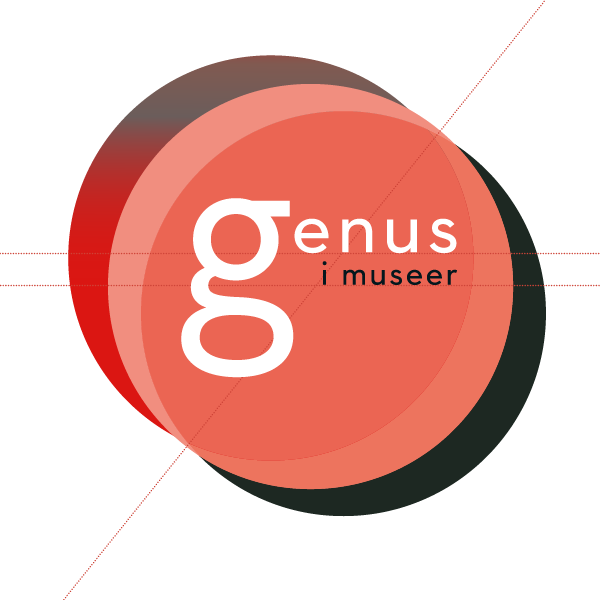Rainbow Plaques: Mapping York’s LGBT History
Här kan du ta del av erfarenheterna från Kit Heymans projekt med crowdsourcing av queera berättelser till minnesskyltar runt om i York.
Artikel publicerades 2015 av Notches, en internationell peer-reviewed blog om sexualitetens historia.
Missa inte att läsa Kits gästkrönika på vår hemsida också: Making gender visible in museums: a new approach
There are over 70 plaques in York, marking historically significant places from a Roman fortress (Bootham) to a minuscule street (Whip-ma-whop-ma-gate). While the original “blue plaque” scheme was started by English Heritage, any group may erect a plaque, marking spaces linked to people or events they consider worthy of commemoration. Yet despite attempts to democratise the process, including guidance from English Heritage, it remains prohibitively expensive to many. When coupled with the erasure of marginalised and minority groups from mainstream historical narratives, this funding restriction threatens to exclude certain sections of society from the act of commemorating and being commemorated.

In May 2014, York’s Alternative History – a group who “explore the histories of York which don’t make the guidebooks” – held an event that aimed to “share this process of public commemoration with everyone.” Organised as part of the “York: Living With History” initiative, one strand of the AHRC-funded project “How should decisions about heritage be made?”, the event used cardboard plaques and removable tape to map York’s untold stories physically onto the city streets. Helen Graham, Research Fellow in Heritage at University of Leeds and member of York’s Alternative History, described it as “a small but powerful affair”. When I began to talk to Helen about contributing an event to the York LGBT History Month festival, the potential of these plaques to make the city’s LGBT history visible was immediately apparent. We wanted both to mark York’s role in events of national significance to LGBT life and to elevate the status of personal and collective memories, to convince people that their LGBT-related experiences constituted “history” in their own right. The appearance of the plaques was important: our design mirrored the iconic blue roundel, with all its legitimating potential, but also visibly signalled the stories’ queerness.
The responses to our call for stories were as diverse as we had hoped. Some reflected the impulse to assimilate LGBT history into mainstream commemorative practices. A plaque on Holy Trinity Church, Goodramgate, marked the solemnising of the commitment between Anne Lister and Ann Walker in 1834. The two women exchanged rings and vows in private, before sharing the sacrament in a ceremony both perceived as a wedding – a striking story in a country that would not legalise same-sex marriage for another 200 years, and where the Church of England still legally cannot perform ceremonies. Anne Lister is remembered, but the act she intended to be an assertive commitment to a female partner is invisible, decoupled from the space where it occurred. Several contributors remarked that “this one deserves a ‘proper’ blue plaque”, reflecting a sense that LGBT people were excluded from York’s history even when their stories were of undeniable significance.
Other contributors addressed personal histories. Some, like Laura Potts, highlighted the alternative significations of well-trodden heritage sites. King’s Manor is well known as the headquarters of Henry VIII’s Council of the North, but its importance as the location for discos organised by the Campaign for Homosexual Equality (CHE) in 1970s-80s is remembered only by those who attended. Others harnessed the potential of commemoration as a form of protest. One of my own plaques recalled my experience as a trans spectacle-wearer in a shop that classified its glasses into binary genders, being directed firmly by an optician to one gendered section and having to harness the courage to cross the room regardless. Laura marked the site where, at a women’s band gig around 1983, she and others were “attacked by [the] rugby club for being queer”, while police called after the attack did nothing to resolve the situation. The rainbow plaques provided an opportunity to revisit and reframe these events as part of York’s LGBT history, highlighting the fact that this was not uniformly positive. In the case of Laura’s experience of physical aggression, they contributed to an ongoing fight back; in the case of the micro-aggressions I had experienced, they empowered me to respond tangibly (branding the optician’s building with a plaque reading “SMASH THE BINARY!”) to something that had previously silenced me.
The involvement of different generations enabled the sharing of stories that might otherwise have disappeared from collective memory: in this sense, the event contributed to the formation and longevity of LGBT history, as well as its commemoration. Jan Altus contributed a plaque to mark the flat at 124 Micklegate, which was passed almost exclusively between gay people for generations, becoming known among York’s LGBT community as a specifically gay space. With the end of that tradition, the place had lost that signification. This demonstrated that the meanings attached to places can be ephemeral – perhaps a particular problem for knowledge of LGBT history, which often belongs to closed communities and is not assimilated into “mainstream” collective memory.
Many of the plaques disappeared within 24 hours, casualties of their necessarily ephemeral medium. But as Helen argues, “significance isn’t the same as permanence”: the plaque events are less about inserting “missing” history (which suggests that a “complete” history could ever exist) than about creating an ongoing dynamic debate. Yet to offset the stories’ inevitable erasure, we preserved photographs of them in a Historypin tour. This also has the benefit of contextualising the plaques. In situ, their lack of any interpretive guide caused some concern. In particular, York St John University Students’ Union were unhappy about the plaque recording homophobic violence from the university rugby club, c.1983. A spokesperson said, “The SU and the University have come a long way in terms of LGBT representation and support in the last 30 years. Last year Stonewall named York St John as one of the most gay-friendly universities in the UK and earlier this year it was named as one of Stonewall’s Top 100 Employers. The SU has an LGBT society and an LGBT Student Champion group who help the sabbatical officers organise and run campaigns and sit on the York Pride Committee. The SU also backs the NUS ‘Out in Sports’ campaign and makes a point of mandatory training for both SU staff and all sports and societies.” Focused on the present, their response revealed the difficulty with which organisations experiencing relative LGBT equality (of which they are understandably proud) can imagine the past existence of homophobia and sexism on their sites. As such, it highlighted the necessity of initiatives like the rainbow plaques – and of LGBT History Month itself – which play an important role in challenging the sense of “inevitable progress” perpetuated by the focus on positive developments in LGBT equality, and in calling attention to the specific instances of activism that have enabled them.
Next year we hope to capture some of the many stories we missed, and to contextualise future plaques to help passers-by understand their significance. This year’s event raised many questions – how do we choose which stories to commemorate? Who should make those decisions? What determines whether history is remembered? How do LGBT identities intersect with these issues? – and we want to continue inviting the people of York to participate in that conversation.
Kit Heyam is a PhD candidate at the University of Leeds, working on a thesis entitled “Literary and historical representations of Edward II and his favourites, c.1305-1700”. Their research interests centre on the textual expression and negotiation of anxiety surrounding sexual transgression in medieval and early modern texts, particularly (though not exclusively) love and sex between men. They are also an assistant coordinator of York LGBT History Month, and will be coordinating York’s first LGBT history school outreach programme later in the year. They blog sporadically at Unbeseeming Words, and tweet from @krheyam.


